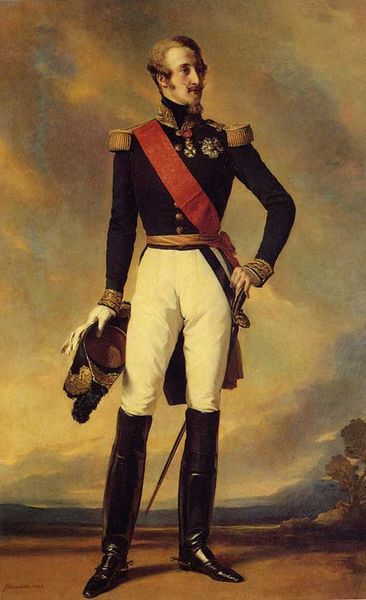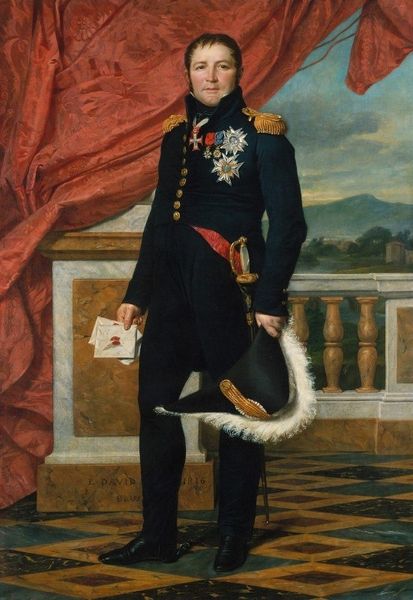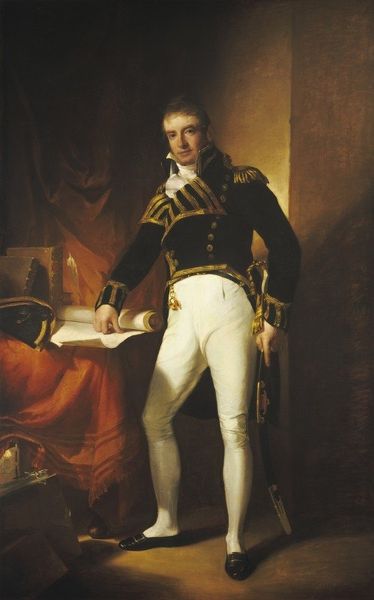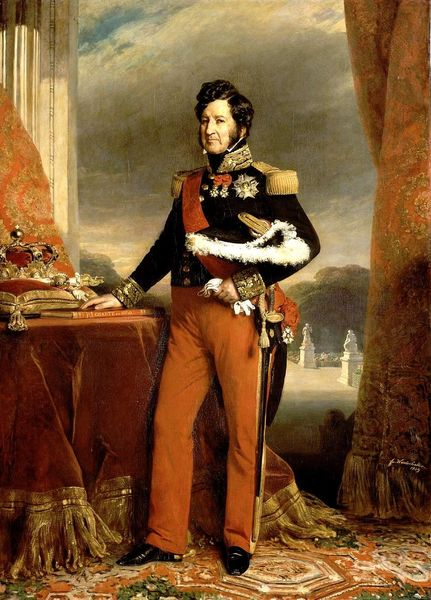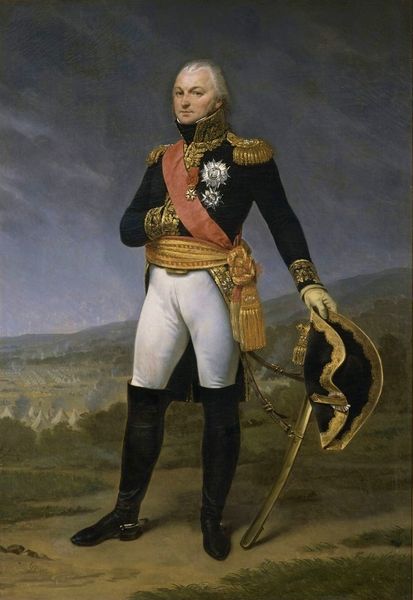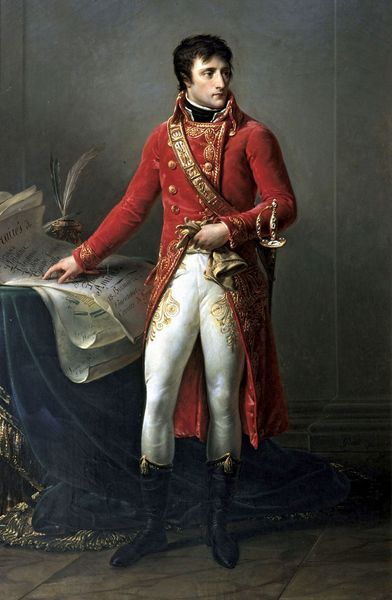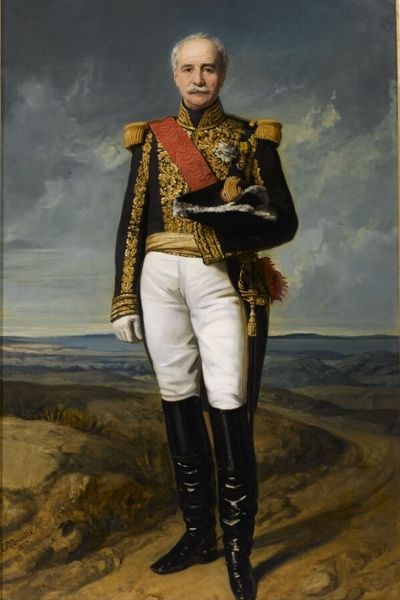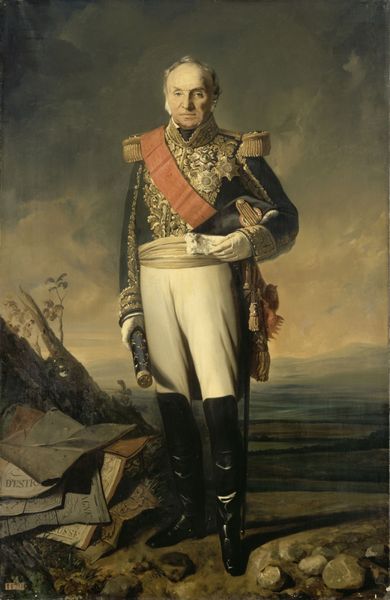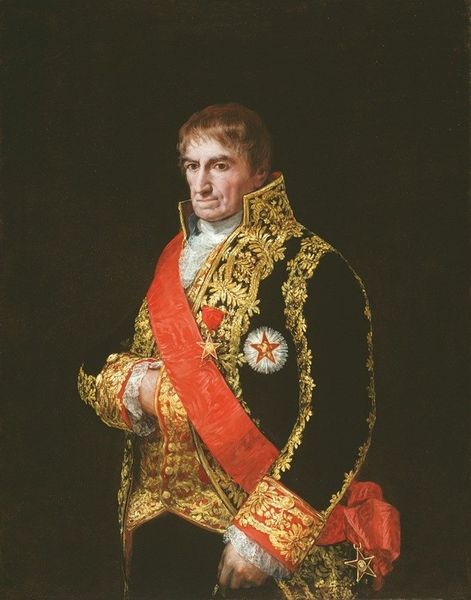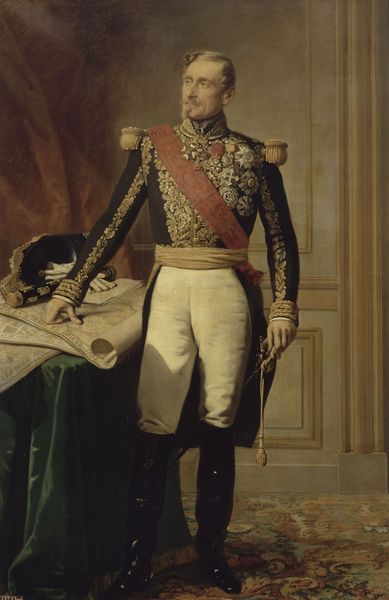
painting, oil-paint
#
portrait
#
painting
#
oil-paint
#
male-portraits
#
romanticism
#
academic-art
#
portrait art
Dimensions: 181 x 278 cm
Copyright: Public domain
Curator: Painted in 1840, this is Franz Xaver Winterhalter's portrait of Leopold I, on display here at the Château de Versailles. Editor: What strikes me immediately is how *regal* it feels, yet slightly staged. Like he’s playing a part in a grand theatrical production. The colours, mostly dark, amplify that slightly melancholic grandeur. Curator: Winterhalter was a master of court portraiture, and this painting is a prime example. Leopold sought an image that projected power and authority. Consider the setting chosen here: he is on a palatial balcony, the gardens extend behind him, all elements to contextualize his rank. Editor: And it certainly works, although the landscape in the back almost feels like it is competing for attention, especially with that stoic looking sculpture of a lion. A power play? I am seeing these attempts at creating that all-important sense of "awe" when depicting someone important. Did that hold particular value in paintings of the time? Curator: Absolutely. Winterhalter, like many artists of the time, was acutely aware of the socio-political function of portraiture. It wasn't just about likeness; it was about constructing an image of leadership that served the sitter's political goals. A monarch had to cultivate legitimacy and project strength. The meticulous details on Leopold's uniform and medals, for instance, speak volumes. Editor: Almost like symbolic weight-lifting. Seriously though, while his face tells the story of a serious leader, I'm intrigued by what is left unsaid. Like who really holds power? Curator: That's the crux of it, isn't it? We see Leopold, a figurehead embodying a specific political agenda through a romanticized lens. But beyond that crafted image, there were, without a doubt, forces that shaped how that agenda took form and moved. Editor: Hmm, fascinating! It makes me consider my own impressions too… perhaps influenced just as much by those political undercurrents. All this grandeur has led me to appreciate just how constructed perceptions are! Curator: Precisely! And I believe that the painting successfully demonstrates this idea of how even in this work of art, political history shapes even the reception itself.
Comments
No comments
Be the first to comment and join the conversation on the ultimate creative platform.

